Espider Renault Espace Spider - 1998
At first sight, transforming a peaceful minivan into an aggressive roadster sounds like a strange idea. But that's exactly what the Sbarro students from the Espera center in Pontarlier did in 1998.
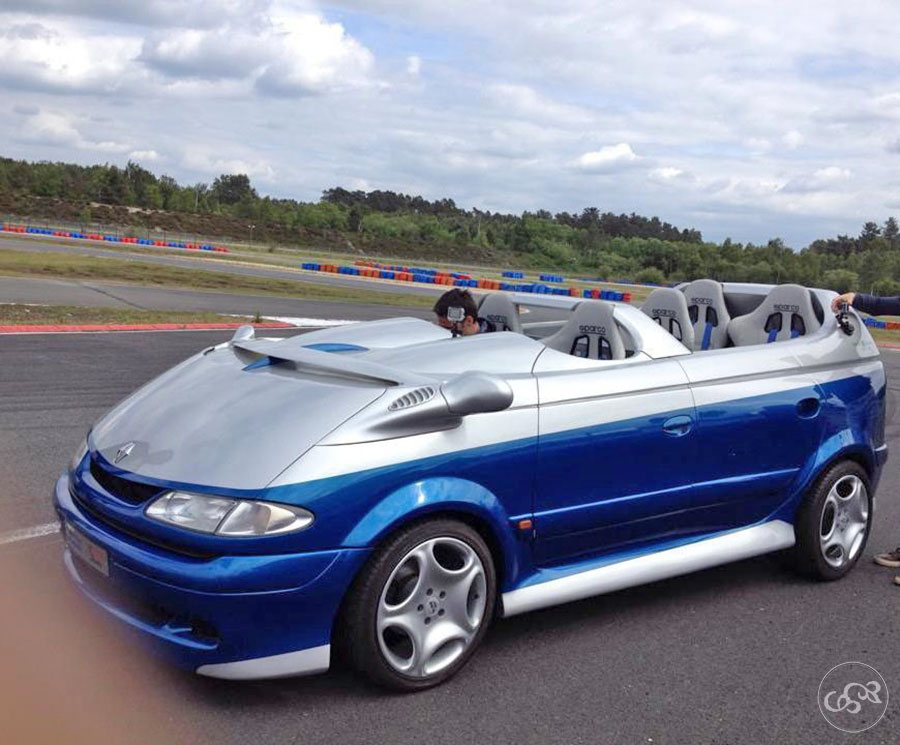
24 heures du Mans
It all began with one man, Bruno David, General Manager of SEM, the management company of the world's most famous and prestigious race: the 24 Hours of Le Mans. He wanted Sbarro to present some of its creations at the 1998 race. Not content with a simple exhibition, Sbarro came up with a crazy idea: to build a spider based on a Renault Espace, with five seats, in order to offer track christenings to the various VIPs invited by the organizers.Matra, which builds the Espace for Renault, accepted the offer. The aim was to recall the brand's past successes in the 24 Hours of Le Mans. Renault agreed: the Espace spider could follow in the footsteps of the famous Formula 1-powered Espace F1. As for Sbarro, apart from a touch of nostalgia (he took part in the 24 Hours of Le Mans as a mechanic with the Filipinetti stable), he has a tempting project to submit to his students, with the added bonus of good media coverage. In short, it's a win-win situation.
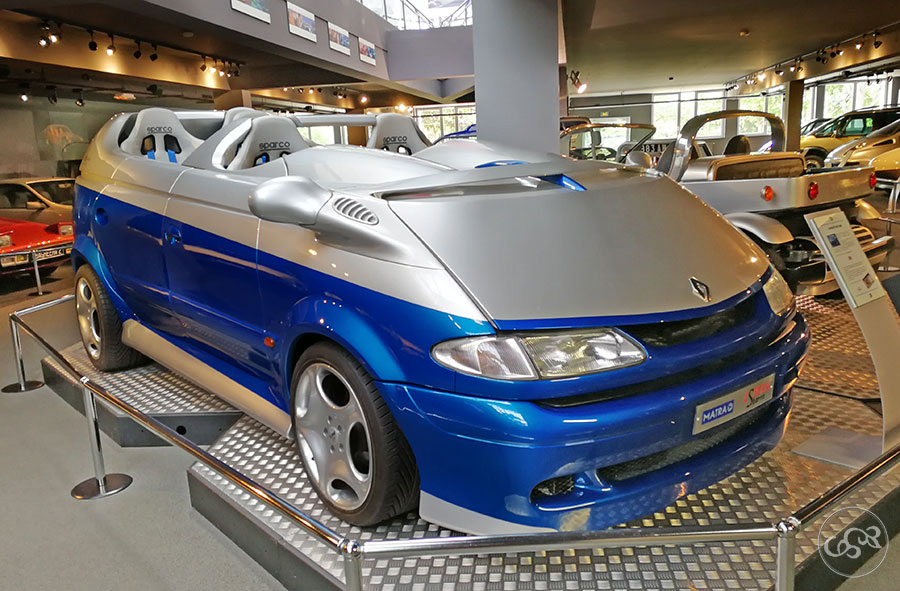
Roadster and monospace
When it came to styling, the Espera students worked closely with Renault's styling department. There was no question of doing just anything. As Renault was involved in the project, the spider had to retain the original Espace's features. The result is a four-door spider with five seats: two at the front in separate cockpits and three at the rear in a cloverleaf arrangement.The windscreen disappears in favor of a windshield that protects the driver and passenger, but also exposes the three people sitting in the elevated position at the rear. To compensate for any deformation of the stripped body, numerous reinforcements have been installed in the body. A small detail: the car on which the project is based is of English origin, with right-hand drive, just like the competition cars of the heyday!
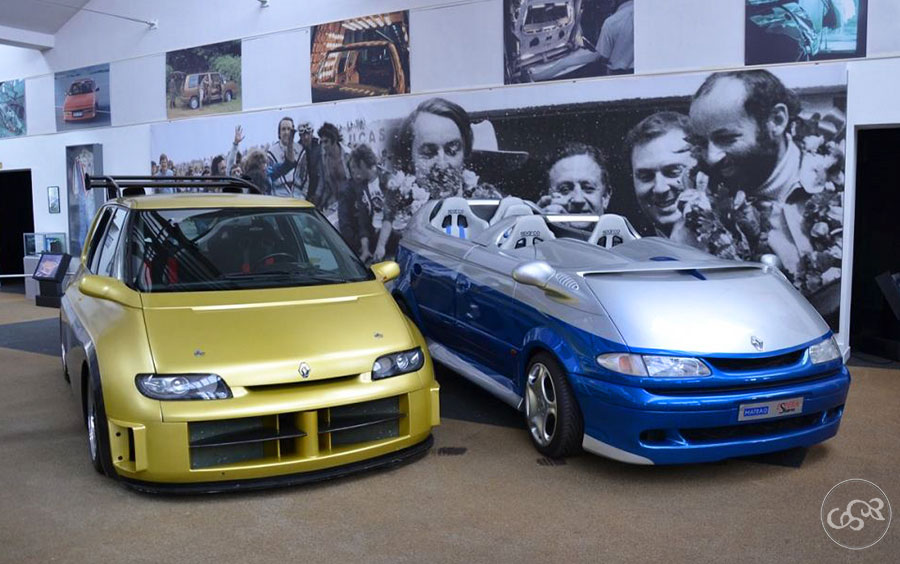
V6 194 hp
In the end, Sbarro and his students created a car that was spectacular but not as extravagant as it might seem. Aesthetically, it leaves no one indifferent (even if the rear end is a little massive). And mechanically, it's still very wise with its standard engine. Its biggest flaw? It's a one-off! Now on display at the Matra Museum in Romorantin, the Espider was restored to working order in 2015 on the occasion of a TV show.
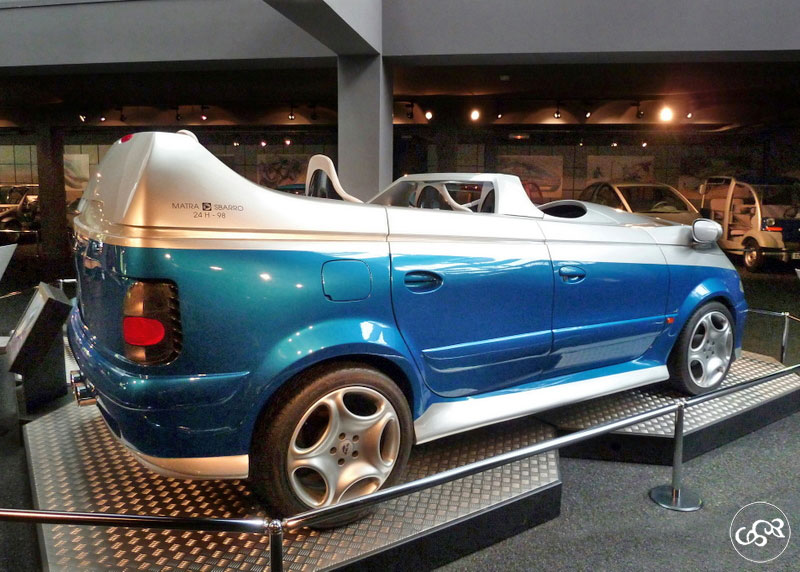
Extract from the press release of June 3, 1998
"For the next 24 Hours, Franco Sbarro, stylist and engineer of genius, will present a slightly extravagant car in the spirit of an offshore, based on the Renault Espace. The fruit of collaboration between students at his school, Matra engineers and Renault design, this aggressively styled, completely uncovered Espace spider will present the public at the Sarthe circuit with some very special guests at the opening of the legendary race.
A project for enthusiasts
For many years, Franco Sbarro has applied his creativity
and capacity for innovation to the creation of concept
cars and original vehicles on the bangs of the
traditional automotive landscape. Naturally fascinated
by motor sport, in 1997 he proposed to the Société de
Gestion des 24H du Mans to develop a car that would
enable the public to get closer to the personalities
present (famous drivers, entertainment personalities,
etc.), while at the same time enlivening the few hours
preceding the race. Once the idea had been launched,
Matra and Renault lent their support to the 1998
graduating class of the Sbarro (Espera) design center,
who would be responsible for building the car. Matra
contributed the skills of its engineers to calculate
structural modifications, while Renault ensured the
coherence of the overall design. And Le Mans evokes
vibrant times for both partners...
The precepts that guided the design of this project were simple: dimensions that emphasize the visibility of the three "VIP" passengers in the public eye, and powerful lines that emphasize compactness and simplicity to create very sporty shapes. The designers' brief also included immediate recognition of the Espace's profile and lines.
Following in the footsteps of another
thrill-seeking machine, the Spider, this Espace's
distinctive feature is that it is completely open to the
outside world. To enhance the view of the three
passengers, the driver and co-driver are set back behind
a spoiler in the extension of the hood, incorporating
two bubble-shaped bosses. A prominent air-intake grille
on the front bumper, generous wheel arches extended by
streamlined rocker panels, and wider front and rear
tracks (+14 cm) all contribute to the car's dynamic
character. Ground clearance has also been reduced by 25
mm compared with a standard Espace. Resolutely sporty,
this Espace is fitted with 18-inch wheels and Michelin
Pilot Sport 255 35 ZR tires at the front and 335 30 ZR
at the rear.
Two colors dominate this car: gray and blue. The
bodywork, with its vigorous, edgy design, is finished in
gray for the upper beltline and France blue for the
lower section. Inside, the cabin features 5 Sparco
bucket seats with grey harmony and blue safety
harnesses. The floor covering is in ribbed aluminum, and
the steering wheel is also special. All materials have
been designed for outdoor use.
The very architecture of the Espace and the hot-dip galvanizing integrated into Matra's specific manufacturing process guarantee optimized rigidity from the outset. To meet the particular constraints of this car, engineers made specific modifications to the structure. A central hoop positioned behind the driver and co-driver is complemented at the front by a cross-member connecting the two spars at pedal height. At the rear, an oversized cross-member is integrated into the tailgate to act as a roll-bar for rear passengers. The "Espider" also benefits from reinforcements in the fenders. Special front and rear suspension springs enhance the car's dynamic behavior on the racetrack.
The Espace presented at Le Mans prefigures the new 194hp 24-valve V6 petrol engine that will shortly be marketed on the standard Espace. This engine is combined with a 4-speed automatic transmission with 6 shift speeds."
Sbarro, Matra and Renault developed this
project with the support of :
Michelin (tires)
Sparco (seats)
Devil (exhaust)
SEM (Société de Gestion des 24H du Mans)
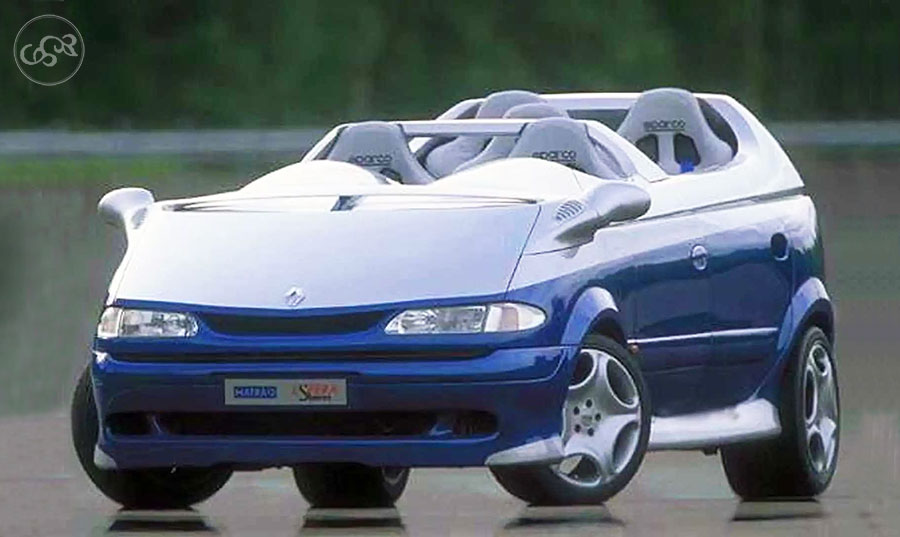
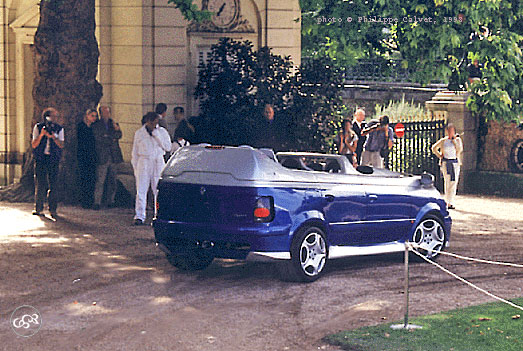
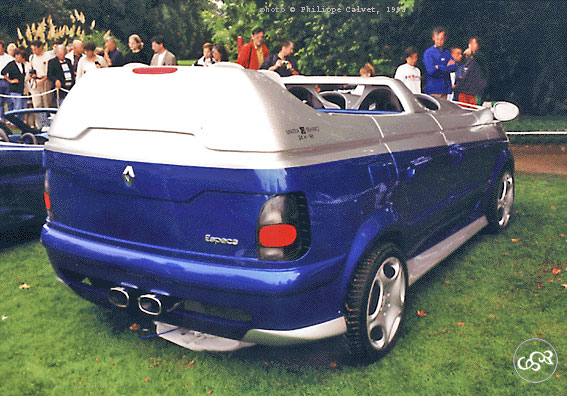
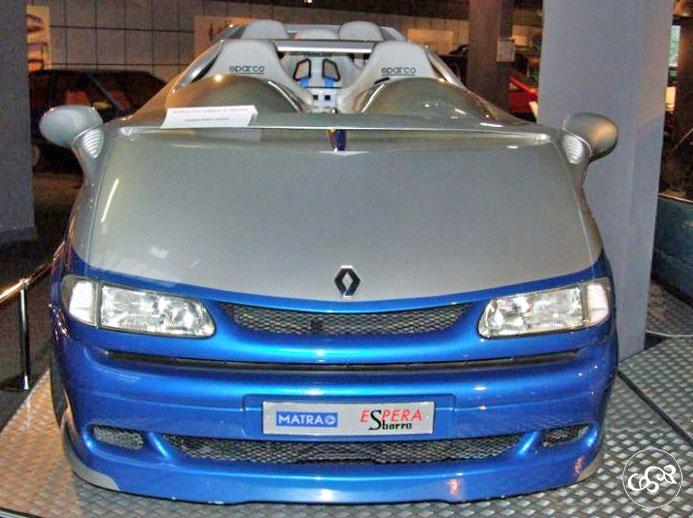
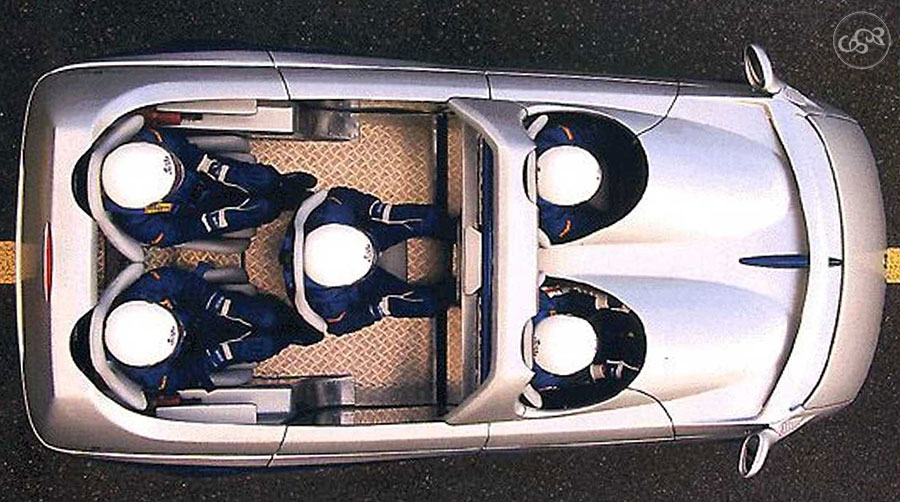
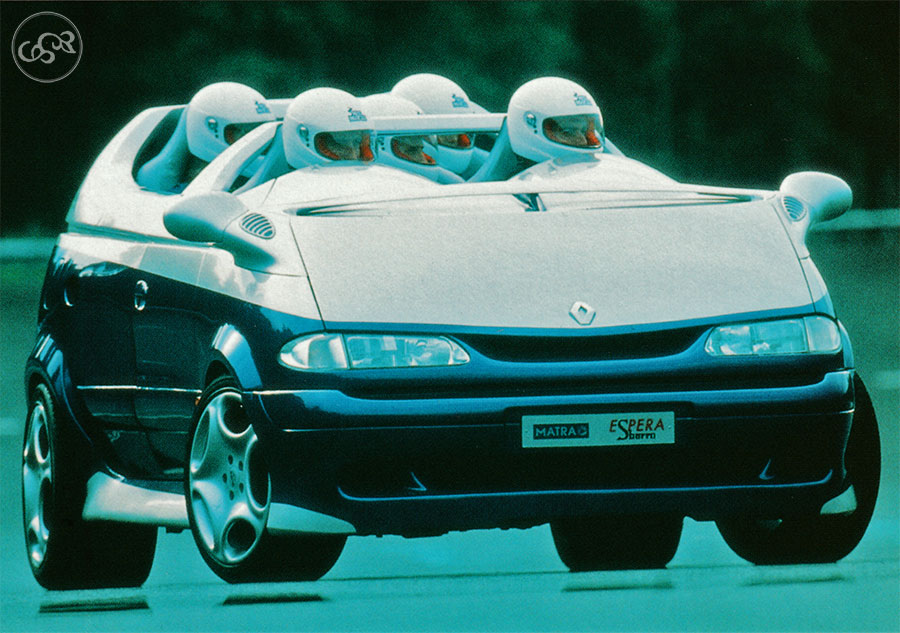
In brief
1- Official collaboration between the Le Mans 24-hour race organization, Matra, Renault, Sbarro and Espera
2- Roofless roadster designed for track baptisms
3- Powered for the first time by the Renault Espace V6 engine